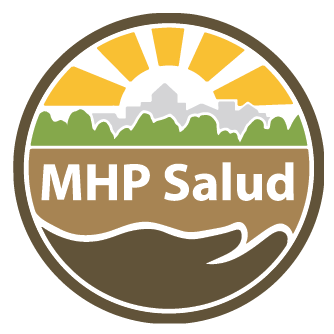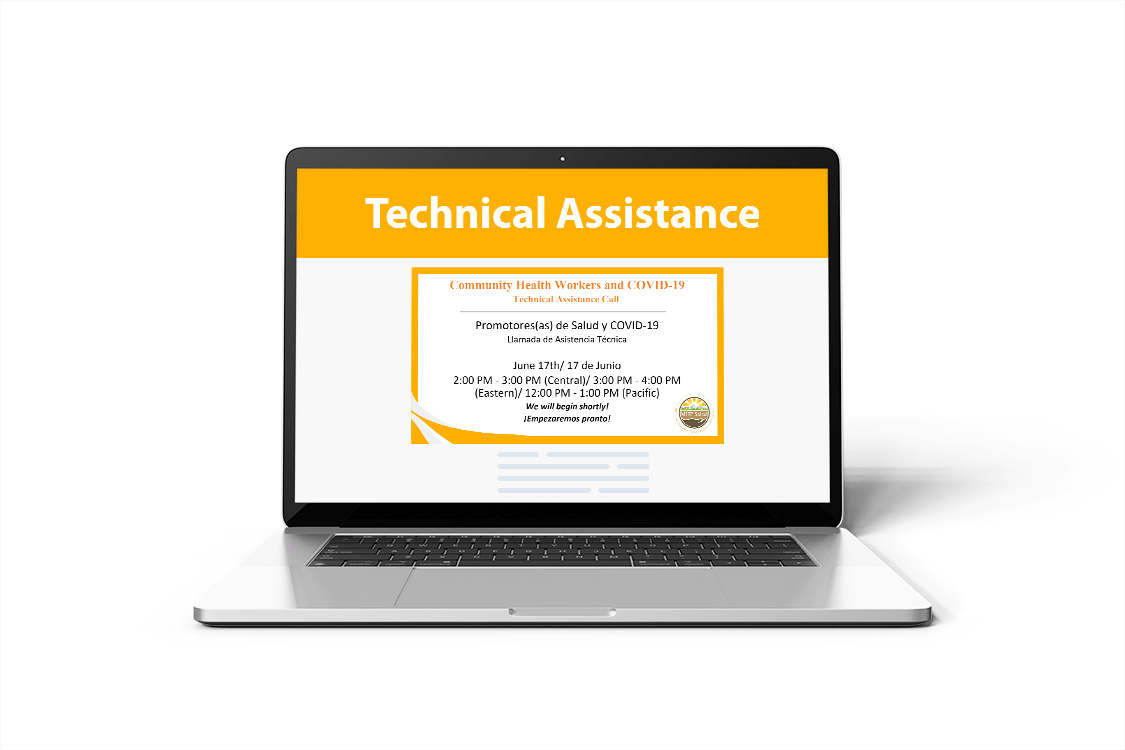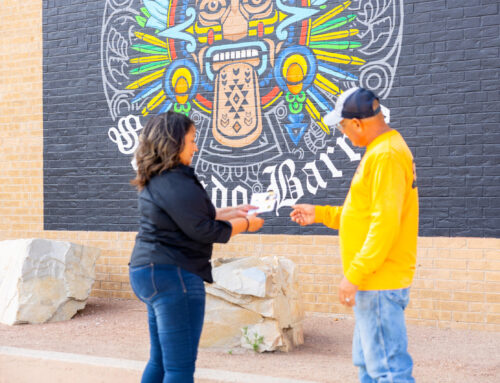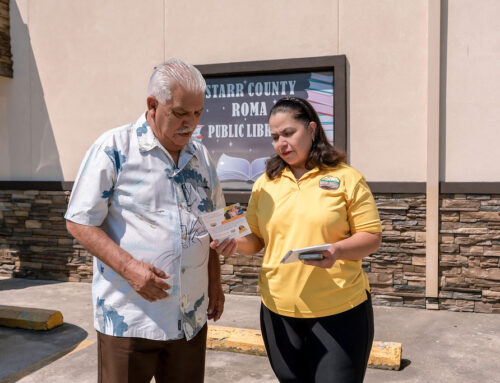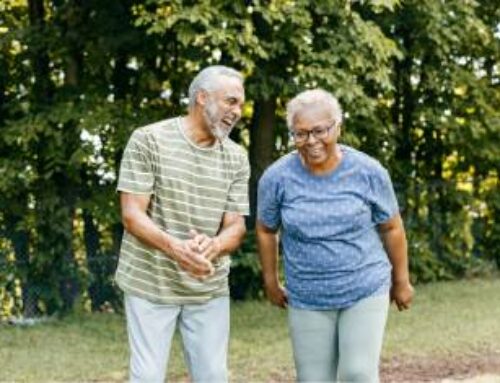An Interview with Latina Caregivers of Older Adults
Published October 2021 | Read this article in Spanish.
MHP Salud staff share their experience as caregivers during the COVID-19 Pandemic: why they do it, the challenges, and the joy…
Caring for an older adult loved one is arguably one of the most challenging tasks that someone may face in their lifetime. At MHP Salud, our staff know first-hand how hard this can be, especially while working full-time in the middle of a pandemic. We sat down to talk with two MHP Salud employees who are caring for their older adult parents, Monica Calderon, a CHW Resource Specialist and Monica Garcia, a Program Director. Through our conversation, we got a glimpse into what it has been like for them as Latina caregivers and what they have learned from their experiences.
What factors influenced you to be the caretaker for your older adult loved ones?
Making the decision to care for an older adult loved one is often influenced by our upbringing and culture, but there can be other factors at play when making this choice. Within the Latino community, being the primary caregiver for older adult parents or family members is the cultural norm. The term Familismo refers to the cultural value or concept of putting family above the self and can be seen in the preference for family caregiving among Latinos.
When discussing what influenced her to take care of her parents, Monica Garcia shared that her identity as a “Fronteriza,” plays a big role in why she cares for her older adult parents. She explained that this term is used to describe a “boderlander”, or someone who embodies two languages and cultures and moves smoothly between them.
When describing what it’s like being a first generation American of immigrant older parents, she describes, “…we carry a strong sense of responsibility for the care of our families. The struggles we saw our parents and grandparents face to provide us with the opportunities they did not have, is the drive many first-generation Americans, like myself, carry in the care of our aging parents…this sense of responsibility is what we have seen, the idea that in time of need, as a family we are here to support each other.”
Although she has always been close with her parents, Monica Garcia left home to pursue a higher education. She explained that as the eldest child, it was her duty to be better for the family. She says,” My parents’ struggle became mine, and I wanted a better life for them and the sacrifices they made for me and my siblings… what that meant for me was obtaining a higher education in another city. Education was such an important driver for my parents. Both my parents have 6th grade education, and their push towards receiving the best opportunities stems from their own experiences and lack thereof. Now that they are aging, I have a strong sense of responsibility for their wellbeing and care.”
Monica Calderon shared distinct influences at play in her decision to care for her parents. She explains “it is a bit different for me, I am the middle child and I also take care of my teenage son.” Being “sandwiched” between taking care of older parents and younger children is not uncommon in Latino households. She goes on to explain that her parents both worked late into life; her mom retired at 72, while her dad retired a bit younger because of his health. At first, her parents were living with one of her siblings, but caring for her parents and managing care for her younger children was challenging. Monica explained, “I saw my mom struggling to take care of my dad, so I offered to help. I asked them if they wanted to co-live with me… and they have been with me for 7 years now.” In the time they have lived together, she has seen up close how aging has affected her parents, “My parents are more active [than most], but it has been hard to see them slowly losing independence.”
It is not uncommon in the Latino community to see older adults who have made large sacrifices for their families then be left with little financial resources as they age, which can be hard on their caretakers who often take on the responsibility of providing financially for their family members. Both women shared the challenges that come from taking care of older adults who immigrated later in life. As Monica Garcia explains, “both my parents receive Social Security Income, but it’s not enough to survive without contributions from me and my siblings.” Calderon agreed, saying “My parents were able to plan for retirement and have medical benefits, but I saw similar a situation with my grandparents. My grandparents lacked care, medical resources, and support, and I feel that they could have lived longer if they had more support. I don’t want to see this repeated with my parents.”
What has it been like taking care of your older adult loved one(s) during COVID-19?
As one can imagine, when COVID-19 hit and stay-at-home orders were put in place, everything changed for both older adults and their caregivers. In the Latino community, it is common for caregivers to live with their older adult loved ones, and this change brought on new challenges for all.
Monica Garcia explained that this was a big blow to everyone because they live together and share a space. Within their household, each person was very independent before COVID-19. As restrictions were placed, not being able to engage with others through activities like attending mass or teaching classes affected everyone’s mental health; they no longer had access to activities that provided them a sense of purpose, wellness, and opportunities for self-care.
Monica Calderon pointed out that when we care for the ones we love, we never stop worrying about their wellbeing. For her, this was something that both she and her parents experienced during the start of the pandemic.
Like many Americans, Monica Calderon lost her job, which caused her parents to worry and turn their attention on Monica’s wellbeing rather than on their own. Monica tried to keep her parents focused on their own health and needs while dealing with her own challenges. During this time, Monica decided to return to school, something that her parents had always encouraged. In fact, she found inspiration to pursue her education from her own dad, who had gone back to college later in life. Seeing Monica taking these steps helped her parents to not worry about her as much.
However, as COVID-19 continued to unfold and more news about older adults’ risks for severe illness was released, her concern and worry for her parents’ health grew. She explained that she started “parenting” her parents to protect them from being exposed to the virus, but she had to learn to “let go and let them be,” which was difficult.
Have you used any community or public services to help you out?
Throughout the pandemic, healthcare delivery had to shift, and we saw increasing use of telehealth services among providers. Monica Garcia shared that her parents had many of their doctor appointments via phone and video calls. However, she did point out how much of a digital divide there is for the older adults in Hispanic/Latino communities. Her parents had a difficult time adjusting to telehealth and she had to be present for them to help them connect to their healthcare team.
Monica Calderon had a similar experience with her parents. As a Community Health Worker (CHW), she had been able to connect many families to the services they needed very easily and quickly. She expressed that she thought it would be easier for her to find resources for them given her expertise; however, she found her experience with public services very frustrating.
Both Monica Garcia and Monica Calderon expressed how difficult it is for older adults in the community to find the services they qualify for and need. As Monica Garcia expressed, society is not very age friendly. Nevertheless, both agreed that CHWs can help bridge the divide between the aging community and the available services.
Have you been able to take time for yourself during this time? If so, what do you do?
There are a variety of ways that people approach self-care, which has become a focus during the COVID-19 pandemic. For many, it can be as simple as having a quiet cup of coffee. However, the term self-care can take on a whole different meaning for caregivers. Caregivers devote most of their time to others and setting aside a portion of their day for themselves can feel nearly impossible. Hispanic caregivers report higher rates of social isolation, negative effects on their physical and emotional health, and depression.¹
It is so important for caregivers to take time for themselves to address their physical and mental health needs because, as Monica Garcia expresses, “the more you cherish yourself, the better you can take care of others. If not, you have nothing to give.” She shared that she started gardening during the pandemic because connecting to the land has been a very important part of taking care of herself. Additionally, she stated that she was inspired by her mother to start running again.
Before the pandemic, Monica Calderon would stay busy by focusing on providing community services and continuing to give to others without taking much time for herself at all. Once the lockdown happened, she started focusing more on herself and her schooling, which was rewarding. She said, “we always talk about ‘self-care,’ but we don’t realize how much we need it until we see ourselves truly, and that doesn’t happen until we’re force to stand still.” For Monica Calderon, those first few months really made her realize how much she had been neglecting herself and how much she needed that self-care. As a result, she has started to exercise as much as she can.
What was the most positive or rewarding experience you had during this time with your loved one?
Although being forced to isolate together for such a long period of time can be challenging, there was a bright side. Monica Garcia expresses how much closer she has been able to get with her parents. She stated that she has been able to learn many new things about them that she didn’t previously know as a result of this time they’ve shared together. She adds that she now has many memories with them that she will always cherish.
Monica Calderon shares that she had a similar experience with her parents throughout the pandemic. She shared that while she was growing up, she always had someone else caring for her because her parents worked long hours, so they did not have much time together. Now, the pandemic has provided the opportunity for them to spend more time together, and she is grateful for the opportunity to enjoy her parents’ company.
Both agree that this time has been priceless and has given them the chance to really get to know their parents. Quality time is not always a possibility with everyday challenges, but it has been one of the good things to come from this pandemic for many of us, especially caregivers.
Putting it all together.
Caring for an older adult loved one in the Latino community is often the expectation, and it can often feel like a call to duty; Latino caregivers can feel a sense of purpose and responsibility in this task. COVID-19 has brought many new challenges to family caregivers; for this reason, taking the time to care for oneself is essential, because it will only improve your ability to care for someone else. As our MHP Salud staff shared in their reflections, throughout these trying times, beautiful experiences were born, and opportunities arose for families to grow even closer.
Interested in learning more about how you can support Hispanic/Latino older adults and their caregivers? Register for our bi-monthly TA Calls or reach out to spatrick@mhpsalud.org for one-on-one technical assistance.
This project was supported by the Administration for Community Living (ACL), U.S. Department of Health and Human Services (HHS) as part of a financial assistance award totaling $255,124.00 with 75 percentage funded by ACL/HHS and $85,949.42 amount and 25 percentage funded by non-governmental source(s). The contents are those of the author(s) and do not necessarily represent the official views of, nor are an endorsement, by ACL/HHS, or the U.S. Government.
Blog Topics
How to Start the Conversation about Advanced Care Planning with Older Hispanic Adults
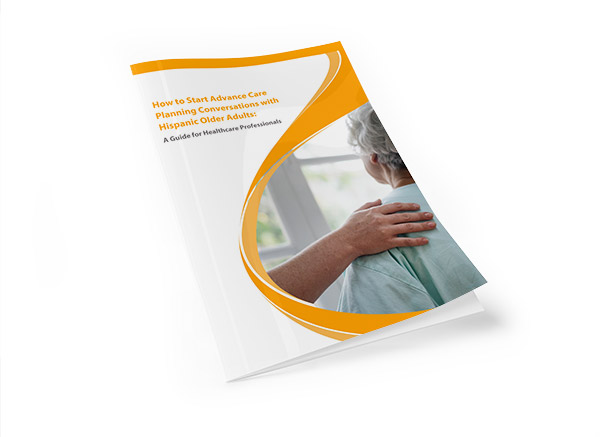
This guide will help healthcare professionals identify the different types of ACP documentation, who can start the conversation, cultural considerations with assisting Hispanic older adults with ACP, tips and strategies for starting the conversation, and other resources.
